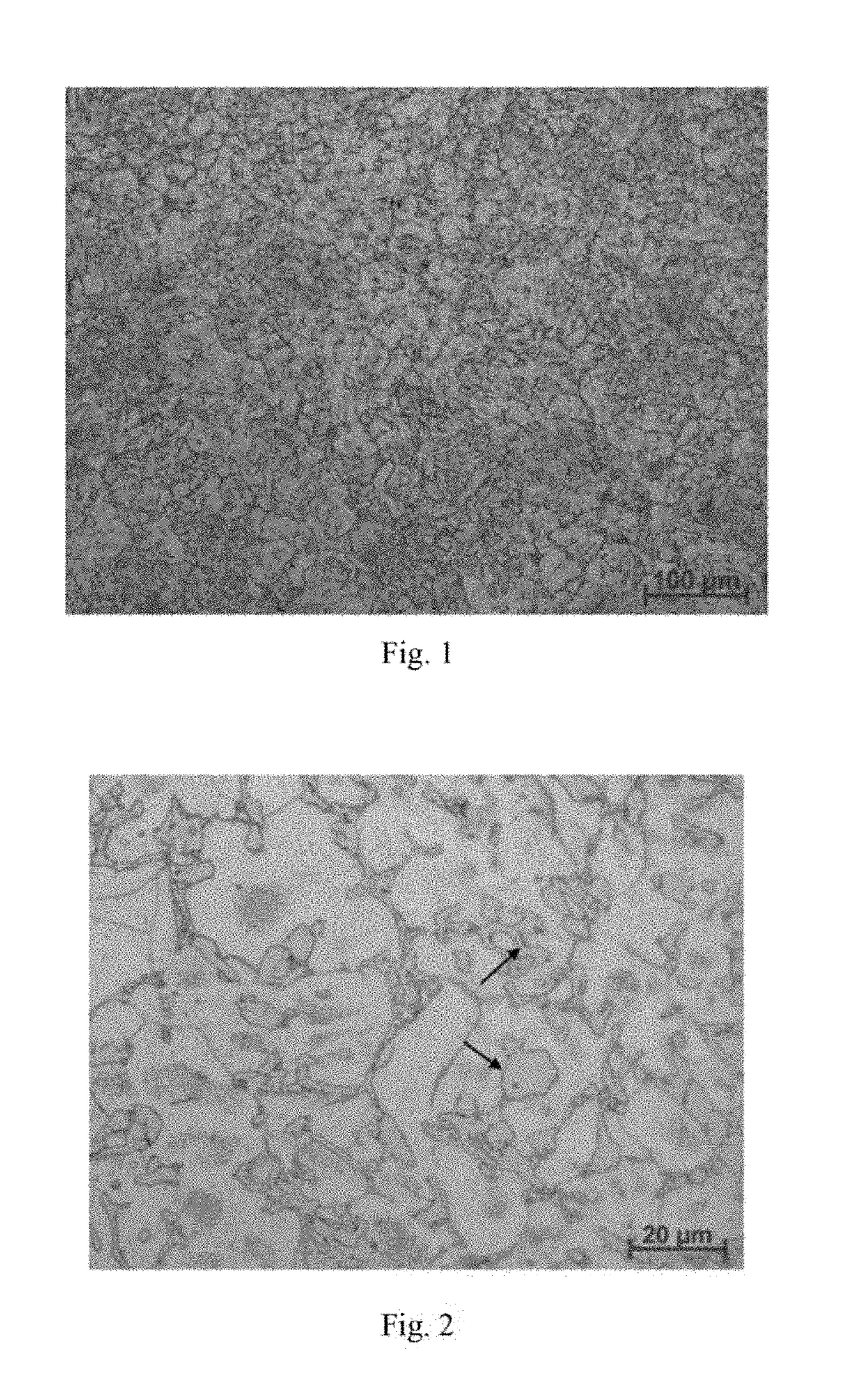Lightweight steel and steel sheet with enhanced elastic modulus, and manufacturing method thereof
a technology of elastic modulus and light weight steel, which is applied in the direction of manufacturing tools, heat treatment equipment, furnaces, etc., can solve the problems of premature failure of the material in service, inability to meet the requirements of large-scale production, and stress concentration, and achieve enhanced elastic modulus and high strength. , the effect of enhancing the whole elastic modulus
- Summary
- Abstract
- Description
- Claims
- Application Information
AI Technical Summary
Benefits of technology
Problems solved by technology
Method used
Image
Examples
examples hm1-hm9
and Comparative Examples CS1-CS3 of Steel Sheets and the Method for Manufacturing the Same
[0120]The steel sheets in the above Examples and Comparative Examples were manufactured with the following steps:
[0121](1) The lightweight steel materials of A1-A9 in Table 1 were smelted and continuously cast according to Examples HM1-HM9 respectively, and the lightweight steel materials of B1-B3 in Table 1 were smelted and continuously cast according to Comparative Examples CS1-CS3 respectively, to obtain slabs of 120-300 mm in thickness, wherein S, P and N were unavoidable impurities, and the balance was Fe;
[0122](2) Hot rolling to obtain hot rolled sheets of 3.2 mm in thickness: in this step, the heating temperature was 1000-1250° C., the soaking time was 0.5-3 h, the final rolling temperature was ≥850° C., and coiling was performed at 400-750° C.;
[0123](3) Post-hot-rolling recrystallization annealing: when the hot-rolled sheet was subjected to recrystallization annealing by way of continuo...
PUM
| Property | Measurement | Unit |
|---|---|---|
| Temperature | aaaaa | aaaaa |
| Temperature | aaaaa | aaaaa |
| Temperature | aaaaa | aaaaa |
Abstract
Description
Claims
Application Information
 Login to View More
Login to View More - R&D
- Intellectual Property
- Life Sciences
- Materials
- Tech Scout
- Unparalleled Data Quality
- Higher Quality Content
- 60% Fewer Hallucinations
Browse by: Latest US Patents, China's latest patents, Technical Efficacy Thesaurus, Application Domain, Technology Topic, Popular Technical Reports.
© 2025 PatSnap. All rights reserved.Legal|Privacy policy|Modern Slavery Act Transparency Statement|Sitemap|About US| Contact US: help@patsnap.com



